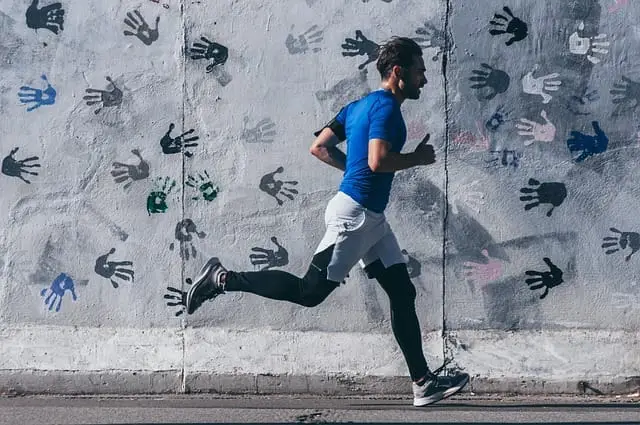Introduction: What is Simple Mindfulness, Really?

“Simple mindfulness techniques to reduce stress, improve focus, and boost your health with easy daily practices.” In our fast-paced, hyper-connected world, our minds are constantly pulled into the past (regrets) or the future (anxieties). Simple Mindfulness is the simple yet profound practice of purposely bringing your attention to the present moment—without judgment. It’s about noticing the thoughts, feelings, and sensations happening right now. This isn’t about emptying your mind; it’s about becoming a calm observer. backed by extensive science, regular mindfulness practice can reduce stress, improve focus, enhance emotional regulation, and even boost physical health. You don’t need a special cushion or hours of free time. Here are 5 simple ways to get started With Flexai.in.
he Science-Backed Benefits of simple Mindfulness.
Research shows that mindfulness can:
- Reduce Stress & Anxiety: It lowers cortisol levels and helps manage the body’s stress response.
- Improve Focus & Attention: It trains your brain to resist distraction.
- Enhance Emotional Health: It can reduce symptoms of depression and increase positive emotions.
- Improve Sleep: By calming a racing mind, it makes it easier to fall and stay asleep.
- Help Manage Pain: It changes the way the brain perceives pain.
Technique 1: The 5-Minute Breathing Meditation.
This is the cornerstone of Simple mindfulness practice.
- Find a Seat: Sit comfortably in a chair or on the floor, with your back straight but relaxed.
- Set a Timer: For just 5 minutes.
- Focus on Your Breath: Close your eyes or soften your gaze. Bring your attention to the physical sensation of your breath. Feel the air moving in and out of your nose, or your chest and belly rising and falling.
- Notice Wandering Thoughts: Your mind will wander. This is completely normal and not a failure. The second you notice your mind has drifted to your to-do list or a worry, gently acknowledge it (“thinking”) and without judgment, guide your attention back to your breath.
- Be Kind to Yourself: This act of noticing and returning is the practice. It’s like a bicep curl for your brain.
Technique 2: The Body Scan.
This practice builds a connection between your mind and body.
- Get Comfortable: Lie down on your back or sit comfortably.
- Bring Attention to Your Toes: Notice any sensations in your toes—tingling, warmth, pressure, or nothing at all.
- Slowly Move Up: Gradually move your attention up through your body: your feet, ankles, calves, knees, thighs, and so on, all the way to the top of your head.
- Simply Notice: Don’t try to change anything. Just observe each part of your body with curiosity.
Technique 3: Mindful Eating.
Transform a daily activity into a simple mindfulness practice.
- Choose One Meal: Start with one snack or meal a day.
- Engage Your Senses: Before eating, notice the color, smell, and texture of your food.
- Take Small Bites: Chew slowly and thoroughly. Put your fork down between bites.
- Savor the Flavor: Really taste the food. Try to identify the different ingredients and seasonings.
- Notice the Effects: Pay attention to how your body feels as you eat and when you start to feel full.
Technique 4: Mindful Walking.
You can practice simple mindfulness anywhere, even on a walk.
- Leave the Headphones: Walk without distraction.
- Feel Your Feet: Notice the sensation of your feet touching the ground—the heel strike, the roll, the push-off.
- Engage Your Senses: Notice the air on your skin, the sounds around you, the sights you pass. When your mind wanders, gently bring it back to the physical sensations of walking.
Technique 5: The STOP Method (For Moments of High Stress).
This is a quick “in-the-moment” tool to hit the pause button on stress.
- S – Stop: Whatever you are doing, just pause for a moment.
- T – Take a breath: Consciously take one deep breath, feeling the air fill your lungs.
- O – Observe: Notice what is happening in your body, your thoughts, and your emotions without judgment. What are you feeling? Where do you feel it?
- P – Proceed: With a greater sense of awareness, continue with your action, responding more consciously rather than reacting automatically.
How to Build a Sustainable Habit.
Start small. Don’t aim for 30 minutes on day one. Commit to just 2-5 minutes of breathing meditation each morning. Tie it to an existing habit, like after you brush your teeth. The consistency of a short daily practice is far more powerful than an hour once a month.
Conclusion: Your Journey to a Calmer Mind.
Simple Mindfulness is a skill that grows with practice. Be patient and compassionate with yourself. By incorporating these simple techniques into your day, you can build resilience against stress and cultivate a greater sense of peace and clarity in your life.

